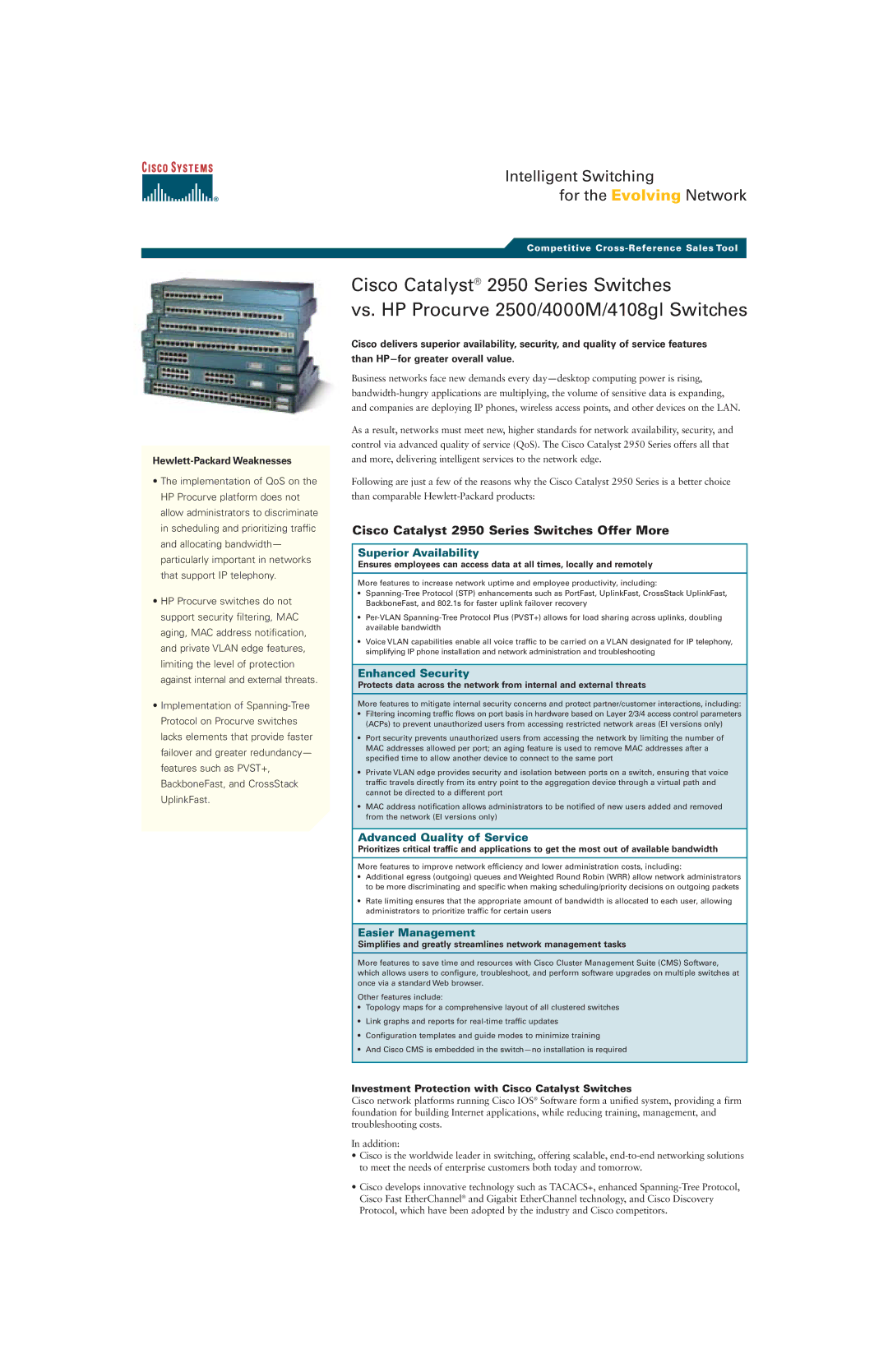2950 specifications
Cisco Systems 2950 is a popular series of Ethernet switches that was initially released in the early 2000s, catering to the growing demand for efficient networking solutions in enterprise environments. Designed primarily for small to medium-sized businesses, the Cisco 2950 family emphasizes ease of use, versatility, and enhancement of network performance.One of the main features of the Cisco 2950 series is its ability to provide Layer 2 switching capabilities. With support for multiple VLANs (Virtual Local Area Networks), the 2950 allows network administrators to segment network traffic efficiently, improving security and performance without requiring additional hardware. Each switch in the 2950 series typically includes several 10/100Mbps Ethernet ports, enabling connections for various devices like computers, printers, and IP phones.
The 2950 series employs Cisco's IOS (Internetwork Operating System), which offers a robust command-line interface for configuration and management. This operating system provides a range of features such as Quality of Service (QoS) to prioritize critical network traffic, Spanning Tree Protocol (STP) to prevent loop creation within the network, and Link Aggregation Control Protocol (LACP) for combining multiple connections in a single logical link to enhance bandwidth and provide redundancy.
Another notable characteristic of the Cisco 2950 is its reliability and scalability. With options for up to 48 ports in a single switch, it can accommodate growing network demands without requiring significant infrastructure changes. Moreover, the switches in this series are designed to support various network topologies, allowing businesses to expand their networks seamlessly.
Security features play a significant role in the Cisco 2950’s design. The switches offer features like port security to restrict access based on MAC addresses, as well as 802.1x authentication to ensure that only authorized devices connect to the network. These security measures are crucial in protecting sensitive data and maintaining compliance with organizational policies.
In summary, Cisco Systems 2950 is a reliable and feature-rich Ethernet switch series suitable for small to medium-sized businesses seeking efficient networking solutions. With its extensive VLAN support, robust security features, and range of enterprise-level capabilities, the 2950 line continues to be a valuable asset in many networking environments despite the advancement of newer models. It embodies Cisco's commitment to providing scalable, versatile, and business-oriented networking products.

